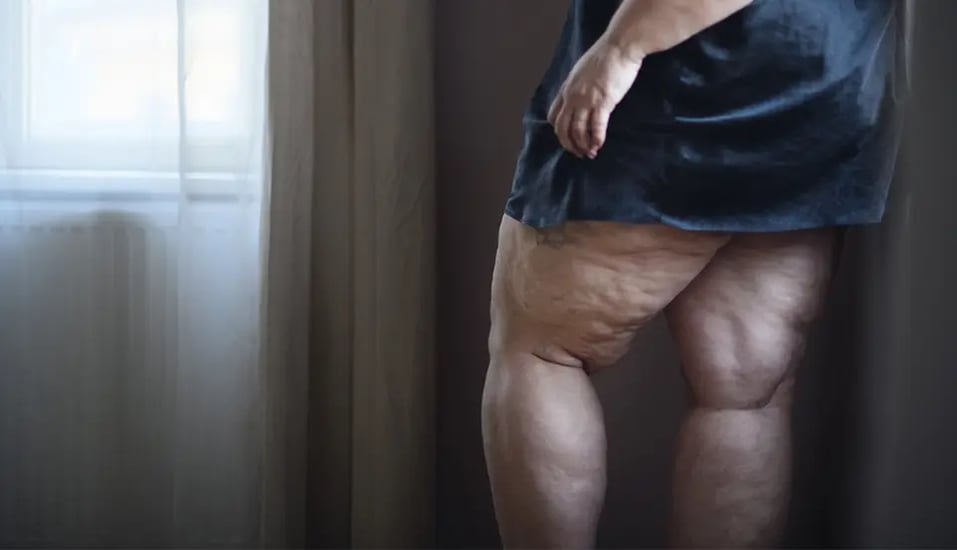Distinguishing Between Lipedema and Naturally Curvy Legs: Let's Analyze!
Do you ever wonder if your legs are more than just a bit curvier than you'd like them to be?
You're not alone! People, especially women, often worry about their leg appearance and wonder if it's more than just extra fat.
We will dive into the world of lipedema. We will explore what it looks like, and discuss how to differ it from naturally thick legs.
So, let's start!
How Do I Know If I Have Lipedema In My Legs?

Lipedema is a condition that primarily affects women. Abnormal stock of fat in the legs, buttocks, and sometimes arms. If you're wondering whether you have this illness, there are a few signs to look out for:
1. Symmetrical Fat Deposits: Lipedema usually occurs in both legs and has a symmetrical pattern. It might be a sign if you notice that your legs are similarly gaining fat on both sides.
2. Pain and Tenderness: It can be painful to touch. You can experience tenderness or discomfort in your legs.
3. Easy Bruising: Individuals with this illness tend to bruise easily. This could be a sign if you find that even minor bumps or pressure leave your skin bruised.
4. No Improvement with Diet and Exercise: This fat doesn't respond well to traditional diet and exercise. If you've tried various weight loss methods, it's time to consider the possibility of lipedema.
What Does Lipedema Look Like In The Legs?
It can vary in appearance, but it often gives the legs a column-like shape.
The legs may appear large fatty, and have a nodular or lumpy texture.
Your upper body remains relatively slim, while your legs accumulate fat more efficiently.
"What It Looks Like in the Legs"
Lipedema often arrives in the legs, causing a buildup of fat cells and fluid. People with lipoedema might notice their legs bruise easily and swell in affected areas. This condition can affect mental health and quality of life.
Gain weight in the legs despite maintaining a healthy diet and exercise routine. Compression therapy and manual lymphatic drainage can help manage symptoms. Additionally, lipoedema tends to run in families, impacting the upper body and sometimes the feet or hands.
Overall, it's important to recognize the signs. You can seek treatments for lipoedema to alleviate its effects on the legs and overall well-being.
What is Thick Legs Not Always Lipedema?

It's important to note that not every case of thick legs is due to lipedema.
Some people naturally have thicker legs due to genetics or other factors.
Here are a few things to consider:
1. Family History: It could be genetic if others in your family have similar leg shapes.
2. Muscle Mass: Muscular legs can appear thick but often well-defined and toned.
3. Weight Distribution: Some people store fat in their legs naturally. This can result in thicker thighs and calves without it being lipedema.
How Do I Slim My Lipedema Legs?
If you suspect you have lipedema, it's crucial to consult with a plastic surgeon for a proper diagnosis.
Lipedema may require specialized treatment, and that is liposuction!
However, it's essential to focus on overall health and well-being.
A balanced diet and regular exercise can help improve your quality of life.
Always consult a healthcare provider before starting any new fitness or diet regimen.
Do I Have Lipedema or Just Fat?
Determining whether you have lipedema or simply carry excess fat can be challenging.
A medical evaluation is the only way to get a definitive answer.
Remember, lipedema is a medical condition that requires professional diagnosis and management.
Concerned about your leg appearance? Consulting a healthcare provider is crucial if you suspect lipedema. Embrace your body and prioritize overall health to feel confident and content in your skin.
Remember, your uniqueness is what makes you beautiful!





